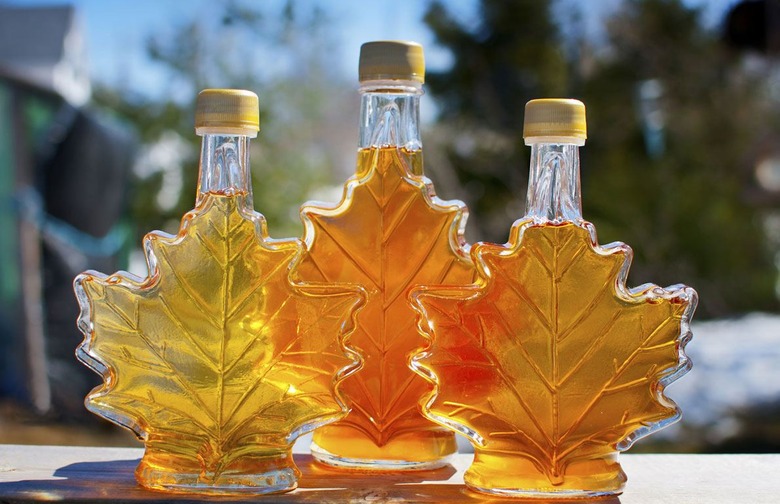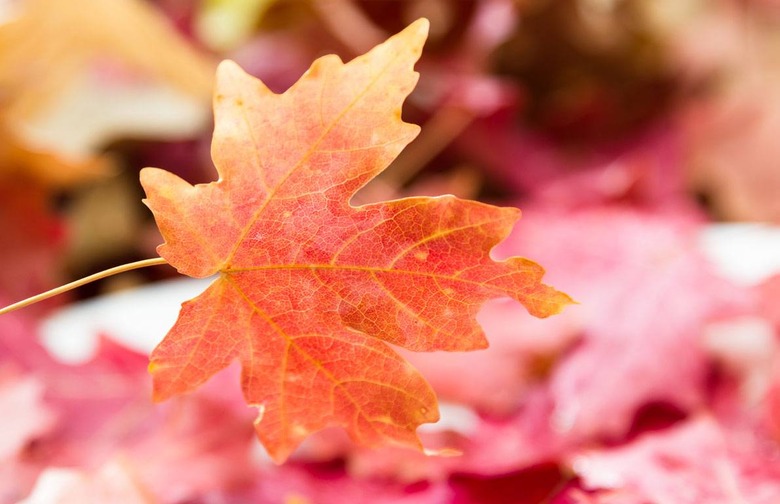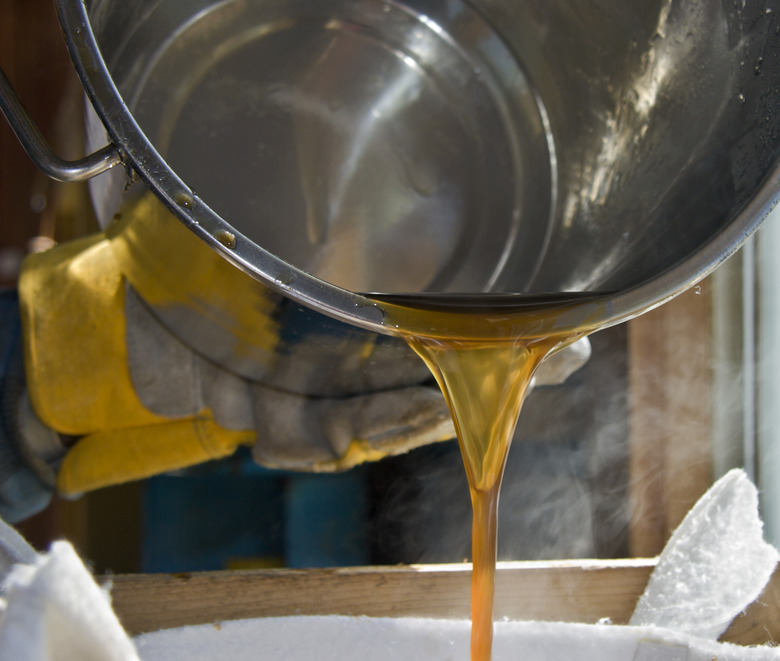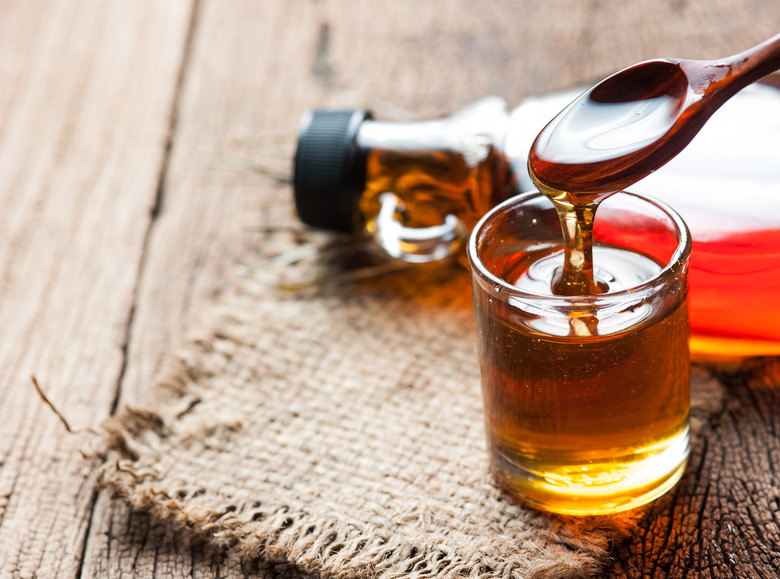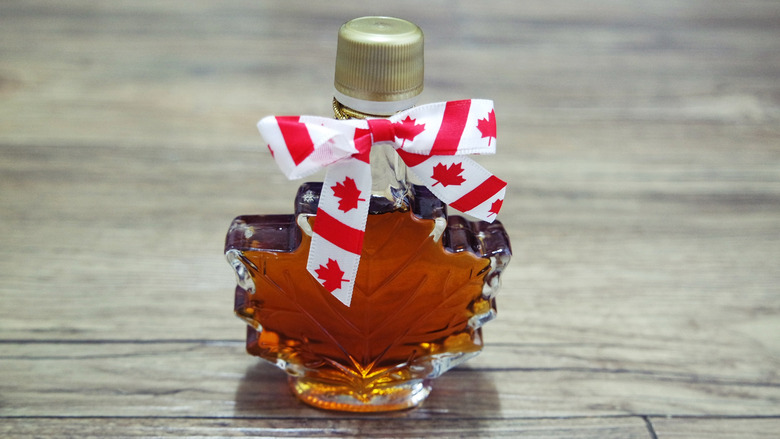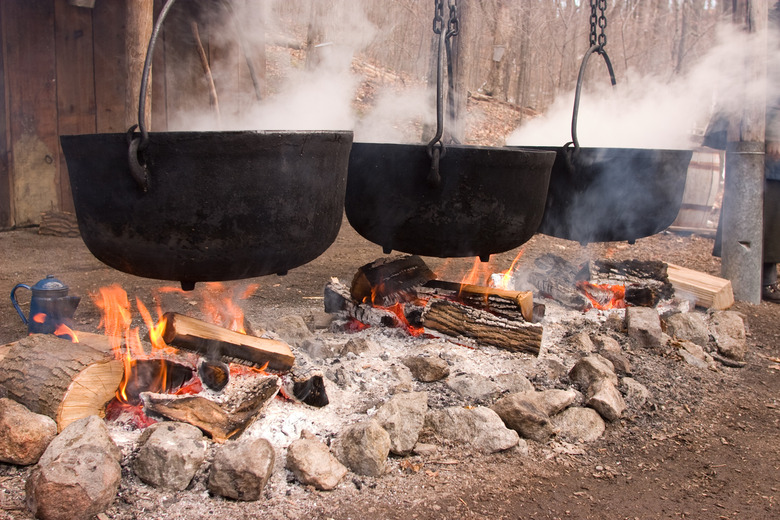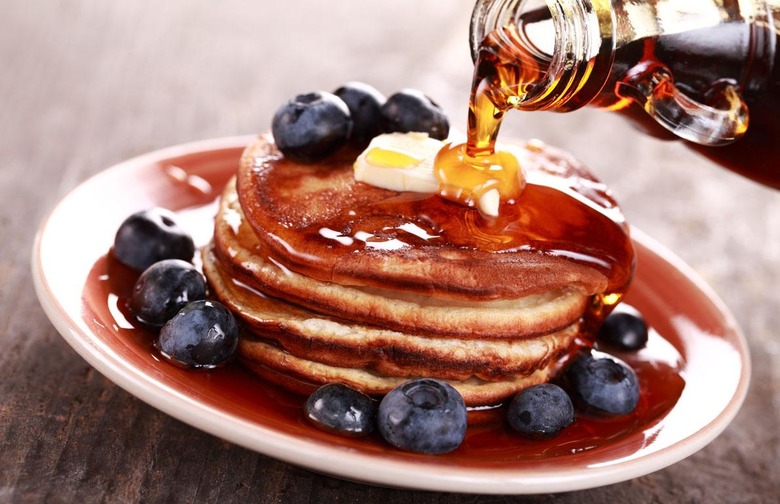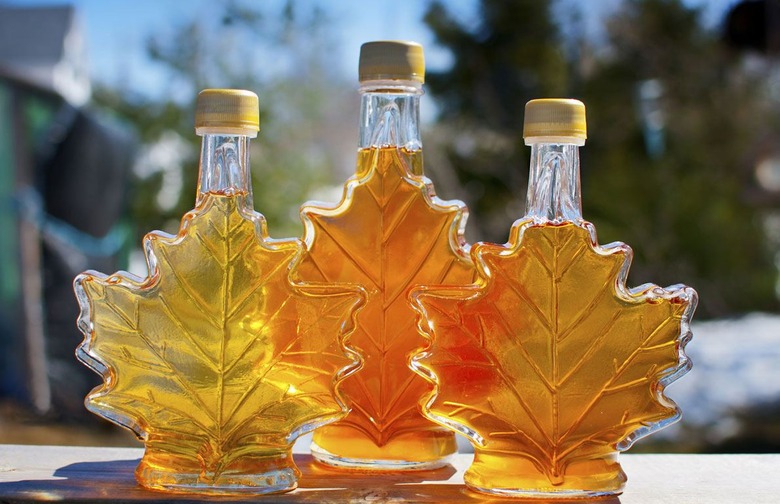Things You Didn't Know About Maple Syrup
Anyone who's ever had real maple syrup will tell you that the corn syrup-based knock-offs commonly sold at the grocery stores just don't compare. Real maple syrup, dark or light, has the perfect amount of sweetness and a rich, complex flavor.
While Vermont is the biggest U.S. producer of the amber elixir, more than 80 percent of the world's maple syrup comes from Canada, and making it is a time-honored tradition there. The process takes patience and skill, according to Danielle Pépin, marketing and innovation agent at the Federation of Quebec Maple Syrup Producers. "The maple syrup production process gets its start from one of nature's true phenomena," she says. "As water from soil absorbs into the maple tree during a cold spring night, warmer temps during the day create pressure that pushes the water back down to the bottom of the tree, making it easier to collect maple sap. The sap is gathered over 12 to 20 days, usually between March and late April, according to the region. Then, the tapping process begins; the sap is transported to a sugar house where it is boiled down until it becomes syrup."
Even people who adore real maple syrup sometimes don't know about other maple products, like butter or sugar. Maple butter isn't a dairy product; the product gets its name because it is creamy, like butter. Maple sugar, much like cane sugar, can be found in many different consistencies, from large chunks (and candies shaped like maple leaves, Santas, and such) to finely ground powder that's similar to confectioners' sugar.
If you love maple syrup, read on for more things you didn't know about maple syrup.
Do You Know Where Your Syrup Comes From?
There’s a Lot of Sap in Syrup
According to Pure Canada Maple, it takes 40 gallons of maple sap to make just one gallon of maple syrup.
There are Expert Maple Syrup Tasters
Maple syrup testers taste syrup from 200,000 barrels of syrup each year to ensure that each batch contains quality product.
Canada is Sitting on a Lot of Syrup
The Global Strategic Maple Syrup Reserve of Canada stores over 70 million pounds of syrup. The reserve made headlines in 2012 when thieves made off with $18 million worth of syrup. Luckily, the culprits were apprehended. In 2016, maple syrup thieves were at it again and stole more than 5,000 gallons of maple syrup intended for sale at Costco.
Maple Syrup Has Had Fans Since the Sixteenth Century
One of the earliest recorded references to maple came from French explorer Jacques Cartier, who wrote that the sugar released from maple trees was as good as any wine from Orléans or Beaune.
Syrup Keeps You Young
Maple syrup contains 54 antioxidant compounds, which help protect cells against free radicals and can keep eyes and skin in good shape. Five of the antioxidants found in maple syrup have never been found anywhere else in nature.
A Little Syrup is Just as Good as a Glass of Wine
Maple has the same antioxidants as red wine, berries, flaxseed, and whole wheat. So next time you make whole wheat and flaxseed pancakes, top them with berries and maple syrup for an antioxidant punch. You can save the wine for later (but if you do need an excuse, here are 20 reasons why you should drink a glass of wine every day).
More from The Daily Meal:
24 French Toast Recipes That Are Worth Waking Up for in the Morning
20 Great Excuses to Eat Waffles Any Time of Day
Tofino Is Canada's Surfing Capital — and One of Its Best Food Towns, Too
